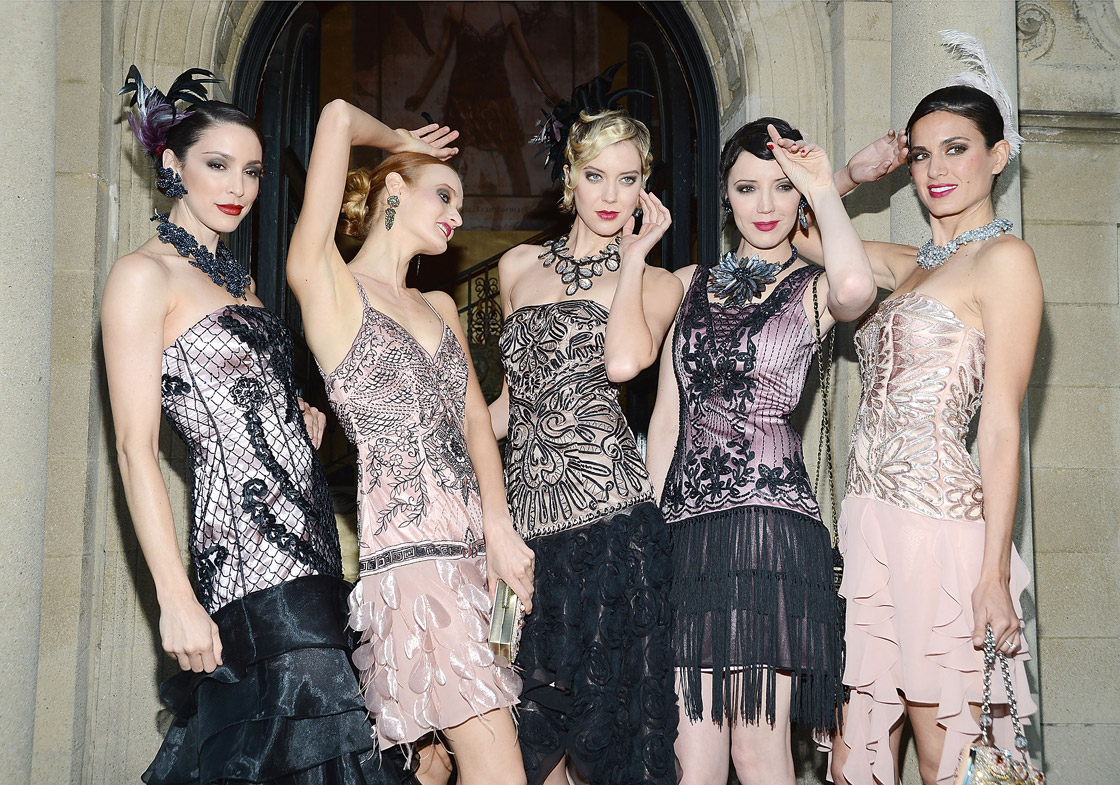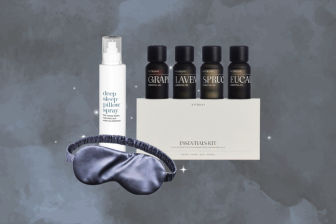TORONTO – Filmgoers are buzzing about the upcoming release of Baz Luhrmann’s “The Great Gatsby,” while fashionistas are clamouring to recreate the dazzling period costumes that colour the movie.

Well before the movie’s original release date last Christmas, the runways and racks were rife with styles channelling inspiration from the Roaring ’20s. Designers including Tory Burch, Marc Jacobs and Ralph Lauren were seen embracing the esthetic, and items such as cloche hats, tiered skirts and drop-waist dresses re-emerged.
“Gatsby” costume designer Catherine Martin worked in tandem with Brooks Brothers, which manufactured more than 500 ensembles for the film, mining the archive of the menswear brand for designs from which many of the movie’s 1920s items were based. Tuxedos, sport coats, linen suits, boater hats and wingtip brogues are among the designs donned by Jay Gatsby and Co. in the film.
The creative collaboration has led to a collection inspired by the opulent tale, the latest in a lengthy line of stylish period dramas and frothy guilty pleasures whose fashions have been coveted by consumers and inspired mainstream designers.
“The whole idea behind this capsule collection is to take the era inspiration and really make it very modern for today,” Deepak Chopra of Brooks Brothers said of the brand’s limited-edition “Gatsby” line.
Signature style touches indicative of the era such as peaked lapels, rounded-collar shirts, regatta blazers and Art Deco-inspired patterns are present. But Chopra said there are modifications in keeping with a contemporary take on the ’20s, including lighter-weight linens used in ivory-hued and pinstriped suits, a mid-rise fit on pants and a modernized silhouette for suits.
Toronto-based costume and set designer Sarah Armstrong isn’t surprised to see the fashions on celluloid cropping up in consumer closets, citing the ’20s in particular as an era rich with stylistic detail.
“It’s given fashion designers a really big opportunity to create a different silhouette for women and for men,” she said.
“I think also with the fabrics and the embellishments of that era – which are beading, you have a lot of embroidery – and you have a lot of really beautiful, delicate closeup detail on clothing. It gives fashion designers a big kind of excitement as far as being able to do something a little bit different that’s being done for the last few years.”

Get breaking National news
Well before the medium of TV even existed and film was in its infancy, viewers have been mimicking styles donned by stars originally featured on-screen.
“Historically, the elites of pre-World War I were socialites and aristocrats. But after the ’20s, it starts to be movie stars. It starts to be the celebrity culture in terms of Hollywood glamour,” said Alison Matthews David, assistant professor in the school of fashion at Ryerson University.
“Young women and young men would aspire to look like stars they saw on the silver screen – even in a period like the Depression.”
Matthews David recalled the 1932 drama “Letty Lynton” and the famed gown donned by Joan Crawford as the film’s titular character. The Adrian-designed white cotton organdy frock with its elaborate, fancifully ruffled sleeves became widely copied, with some 500,000 replicas sold at U.S. department store Macy’s. Women would also purchase “Letty Lynton” patterns and create their own dresses, noted Matthews David.
More than a half-century since “Lynton,” iconic fashions popularized by characters in film and TV have continued to leave a lasting imprint.
Armstrong said the prominence of activewear in the 1983 cult film “Flashdance” made a mark on women’s fashion, with Jennifer Beals transforming the slouchy, off-the-shoulder, oversized sweatshirt into an enduring style statement.
On the small screen, Armstrong said “Miami Vice” had a huge impact on men’s tailoring and men’s clothing. While the prospect of nabbing suspects dressed in pastel-hued shirts and linen suits may seem far-fetched, they were the go-to styles donned by undercover detectives Sonny Crockett (Don Johnson) and Ricardo Tubbs (Philip Michael Thomas) in the stylish ’80s crime drama.
“You had the colours of Miami, which are very strong kind of sherbet corals, lighter tones which traditionally haven’t been very popular in men’s clothing. And then you had two very strong macho-type men in Don Johnson and Philip Michael Thomas…that had strong style as well,” recalled Armstrong.
“It went back to a particular era with the 1920s and 1930s and double-breasted suits and linens and not wearing collared shirts and linen pants and the different fabrics that had the huge impact on men’s tailoring and clothing of that particular era.”
While costume designers deserve full credit for bringing their fashionable visions to the screen, Armstrong and Matthews David agree that it’s the marquee names wearing the designs that help to further elevate the looks.
Armstrong said Diane Keaton pulled items from her own wardrobe for “Annie Hall,” helping propel the trend of menswear-inspired dressing among women in the 1970s.
Matthews David said the sexy, androgynous look of Marlene Dietrich and the “classic timelessness” of a Givenchy-clad Audrey Hepburn in “Breakfast at Tiffany’s” also lend credence to how an A-lister’s style can help further boost the appeal of their attire.
“It’s often the celebrity herself who wears it…They have star power. They’re trendsetters.”
Chopra said the ease of access to images and information pertaining to fashions seen on film and TV is also a factor.
“I think the younger generation is so in tune with the media. It’s in our faces. It’s on your Facebook page, it’s in your windows, it’s in the magazines, and digital media is so in your face again. So those images, people are relating to it much faster, and they want it,” he said. “They can either get something like this (Gatbsy collection), or they can go out on the street and develop their own taste.”
More recently, popular teen-focused films and series have embraced preppy chic. The 1995 film “Clueless” and recently-wrapped soap “Gossip Girl” offering a fresh spin on the staid school uniform with plenty of headbands, neckties, blazers, knits, kilts and knee socks in the mix
Yet more than a decade into the 21st century, it’s not necessarily the creation of new styles that are making waves, but rather nostalgia for and revival of fashions popularized in the past that continue to pique interest.
With its elegant array of richly embroidered frocks and jackets, beaded numbers, drop-waist dresses, cloches and wide-brimmed hats, popular British historical drama “Downton Abbey” has helped bring early 20th century fashions back to the forefront.
And the slim-fit suits, skinny ties, sheaths and shirtdresses sported by Don Draper and Co. on Emmy-winning drama “Mad Men” has helped catapult ’50s and ’60s era styles to the modern-day fashion landscape – complete with a collection designed by Banana Republic in collaboration with the show’s costume designer, Janie Bryant.
“There’s a really, really strong, clean esthetic to that show,” said Armstrong. “The lines are beautiful, the colours are saturated. It’s also quite a sophisticated, beautiful-looking show.
“I think that always will create excitement with people and the public to kind of want to have a departure from their regular life of T-shirts and jeans and go towards something that’s a little more sophisticated and elegant.”







Comments